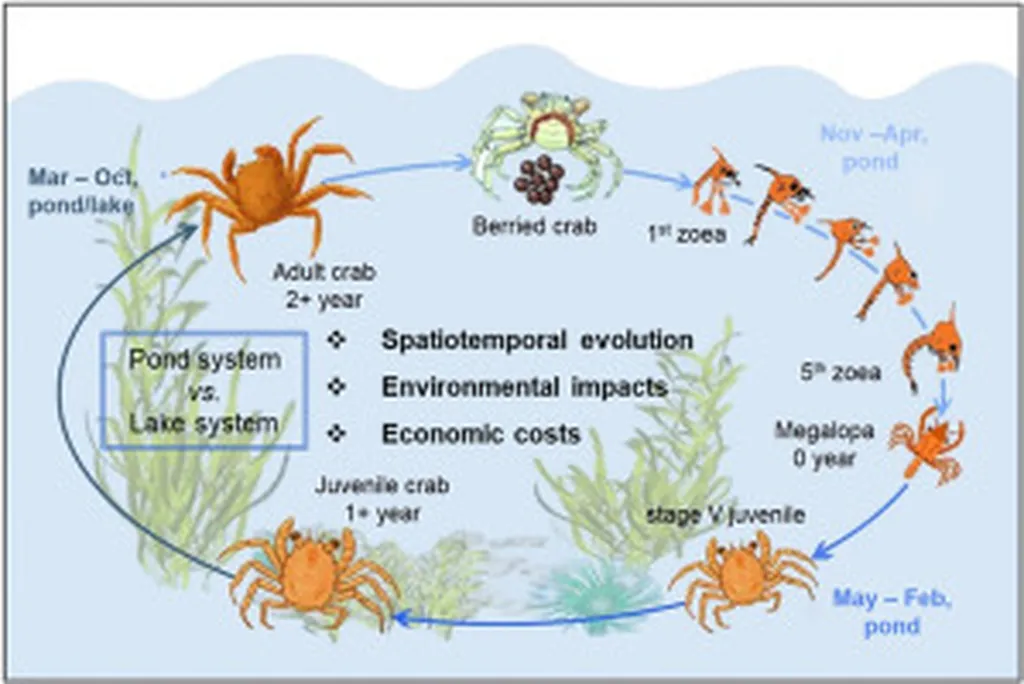In the heart of China’s aquaculture industry, a fascinating study is shedding new light on how the environment shapes the flavor of one of the country’s most prized crustaceans. The Chinese mitten crab, a delicacy packed with protein, fatty acids, and minerals, has been the subject of a groundbreaking investigation led by Feifei Han from the School of Food Science and Biotechnology at Zhejiang Gongshang University in Hangzhou. The research, published in the journal eFood (translated as “Electronic Food”), delves into the nuanced world of flavor compounds in crab meat, offering insights that could revolutionize aquaculture practices and enhance the commercial value of this sought-after seafood.
The study, titled “Comparison of Flavor Compounds in Crab Meat From Chinese Mitten Crab Raised in Lake, Pond and Rice‐Field Environments,” employed advanced technologies such as electronic noses and tongues, amino acid automatic analyzers, liquid chromatographs, and GC-MS-O to detect and analyze the flavor profiles of crabs raised in different environments. The findings revealed significant differences in the content and types of flavor substances in the muscle of Chinese mitten crabs grown in lakes, ponds, and rice fields.
“Our research highlights the profound impact of the environment on the flavor of Chinese mitten crab meat,” said Han. “By understanding these differences, we can optimize aquaculture conditions to enhance the flavor quality and, consequently, the market value of this important economic species.”
The implications of this research are far-reaching. For aquaculture producers, the findings provide a roadmap for tailoring farming practices to achieve desired flavor profiles. This could lead to the development of premium products that command higher prices in the market. For consumers, the study offers a glimpse into the intricate world of flavor formation, fostering a deeper appreciation for the nuances in seafood quality.
Moreover, the study’s methodology sets a new standard for flavor analysis in aquaculture. The use of advanced technologies to detect and quantify flavor compounds opens up new avenues for research and innovation in the field. As Han notes, “This research provides a basis for further understanding the mechanism of flavor formation in the muscle of Chinese mitten crab and offers a foundation for regulating the flavor quality of its muscle.”
The commercial impacts of this research are particularly significant for the energy sector, which is increasingly investing in sustainable aquaculture practices. By optimizing flavor quality, producers can enhance the profitability of their operations, making aquaculture a more attractive investment. Additionally, the study’s focus on environmental factors aligns with the growing demand for eco-friendly and sustainable food production methods.
As the aquaculture industry continues to evolve, research like Han’s will play a crucial role in shaping its future. By unraveling the complexities of flavor formation, scientists and producers can work together to create high-quality, sustainable seafood products that meet the demands of an increasingly discerning market. The study published in eFood is a testament to the power of scientific inquiry in driving innovation and progress in the aquaculture sector.

